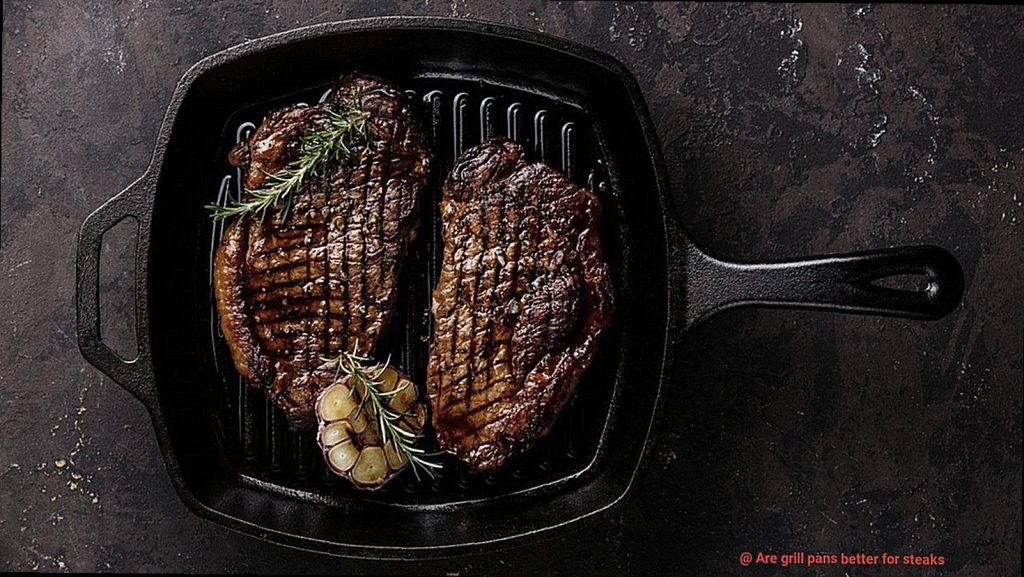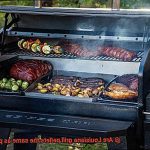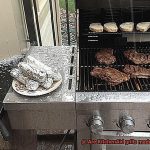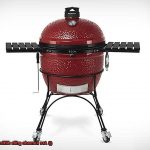Picture this: a perfectly cooked steak, juicy and tender on the inside with those iconic grill marks seared onto the outside. Your mouth is watering just thinking about it, right? But, how do you achieve that perfect steak? Is using a grill pan the answer to your steak-cooking dreams?
Let’s start by talking about the grill pan itself. This versatile piece of cookware can be used on any stovetop and its raised ridges replicate the searing char marks produced by grilling, adding flavor and depth to your steak. A traditional skillet or oven can also produce great-tasting steak, but they may not add the same level of texture and flavor as a grill pan.
But is a grill pan really the ultimate tool for cooking the perfect steak? Some argue yes, while others believe alternative cooking methods like broiling or grilling produce better results. So which camp should you side with?
In this post, we’ll take a closer look at the benefits and drawbacks of using a grill pan for steaks and help you decide if it’s truly the best option for your taste buds. Whether you’re cooking up a special occasion feast or simply craving a weeknight dinner that will blow your socks off – let’s explore together if the grill pan is truly worth all the hype.
Contents
Advantages of Using a Grill Pan for Steaks
A grill pan can be your year-round solution. This versatile tool has become increasingly popular amongst home cooks as an alternative to traditional outdoor grilling. Here are some of the advantages of using a grill pan for steaks:
Cook Indoors Regardless of the Weather Outside
One of the primary advantages of using a grill pan for steaks is that it allows you to cook indoors regardless of the weather outside. No need to worry about rain or shine. Moreover, grill pans are incredibly versatile and can be used on any stovetop, making them an excellent option for those without access to an outdoor grill.
Achieve Beautiful Grill Marks
Another key advantage of using a grill pan is the ability to achieve beautiful grill marks on your steaks. These marks not only add an appealing visual element but also enhance the flavor and texture of the meat. The high ridges on the pan create well-defined char lines, while the spaces in between allow excess fat and juices to drain away, resulting in a healthier and more flavorful steak.
Even Cooking and Precise Temperature Control
Grill pans are also great at retaining heat, ensuring even cooking and preventing the steak from becoming dry or tough. Additionally, they allow you to control the temperature more precisely than traditional grills, so you can achieve the desired level of doneness with ease. This level of control is especially helpful for thicker cuts of steak that require more time to cook through evenly.
Versatile Cooking Tool
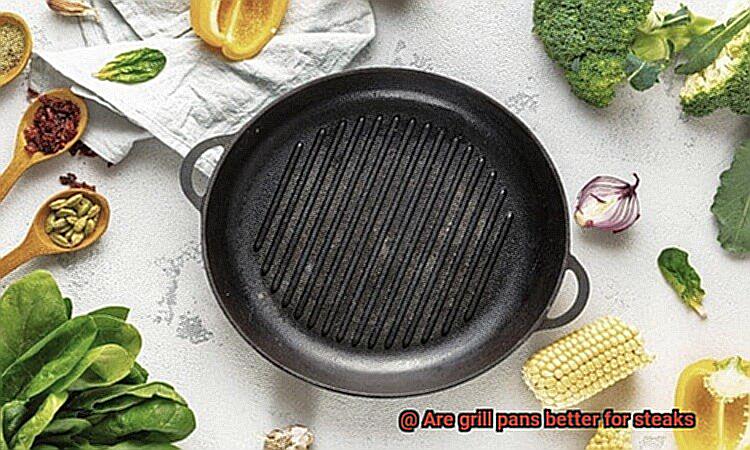
Grill pans are not only great for steaks but can be used for a variety of other foods such as vegetables, fish, and poultry. This makes them an excellent addition to any kitchen as they offer versatility in cooking.
Easy to Clean
Grill pans are easy to clean compared to traditional grills. Some models are even dishwasher safe, making post-cooking cleanup a breeze.
Disadvantages of Using a Grill Pan for Steaks
When it comes to cooking steaks, grill pans are a popular alternative to outdoor grilling. However, there are several disadvantages to using a grill pan for this purpose that should be considered before making your choice.
One major disadvantage is the difficulty of cleaning grill pans. The ridges on the pan can make it challenging to remove all the bits of food left behind after cooking. This can lead to a buildup of grease and bacteria over time if not cleaned properly. So, if you’re not a fan of washing dishes, a grill pan might not be the best option for you.
Another disadvantage is the lack of smoky flavor that outdoor grilling provides. While some people may prefer the taste of a pan-seared steak, others may find it lacking in comparison to an outdoor-grilled steak. This is because the smoke from the grill adds a distinct flavor to the meat that cannot be replicated in a pan.
Moreover, grill pans can cause steaks to cook unevenly. The ridges in the pan can cause certain parts of the steak to cook faster than others, leading to an inconsistent texture throughout the meat. This can be especially problematic for thicker cuts of steak, which may require longer cooking times.
Finally, using a grill pan for steaks can be less healthy than other cooking methods. The high heat used in a grill pan can cause the fat from the steak to splatter, leading to an increase in smoke and potentially harmful chemicals being released into the air. Additionally, cooking steaks at high temperatures can lead to the formation of carcinogenic compounds called heterocyclic amines (HCAs).
The Pros and Cons of Outdoor Grilling vs. Grill Pans
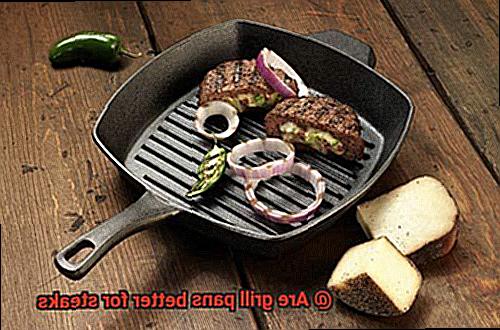
There are two primary methods to choose from: outdoor grilling and using grill pans. Each method has its unique advantages and disadvantages that can impact the taste, texture, and overall experience of cooking steaks.
Let’s start with outdoor grilling. One of the biggest draws is the smoky flavor that infuses the meat, creating a delicious and distinctive taste. Plus, grilling outside provides a fun and social atmosphere for family and friends to gather around the grill. However, it can be challenging to control the heat level, resulting in undercooked or overcooked steaks. Additionally, outdoor grilling requires more time and preparation, such as cleaning the grill and setting up equipment. And let’s not forget – outdoor grilling is weather-dependent, meaning that it may not always be possible to grill outside.
Now, let’s talk about using grill pans indoors. These pans offer convenience and efficiency, providing precise temperature control for perfectly cooked steaks every time. Plus, they’re easy to clean compared to outdoor grills. And since you can use them indoors, you can cook steak year-round. However, they don’t impart the same smoky flavor as outdoor grilling, and you may need to cook steaks in batches depending on the size of your pan.
When it comes down to it, both methods have their pros and cons. So what factors should you consider when making your decision? For starters, do you value the distinct smoky flavor of outdoor grilling or are you looking for convenience and precise temperature control with a grill pan? Additionally, consider factors such as weather conditions, available equipment, and time constraints.
To help you decide which method is right for you, we’ve compiled a list of pros and cons:
Pros of Outdoor Grilling:
- Smoky flavor that infuses the meat
- Fun and social atmosphere for family and friends
- Traditional and classic method of cooking steaks
Cons of Outdoor Grilling:
- Challenging to control heat level
- Requires more time and preparation
- Weather-dependent
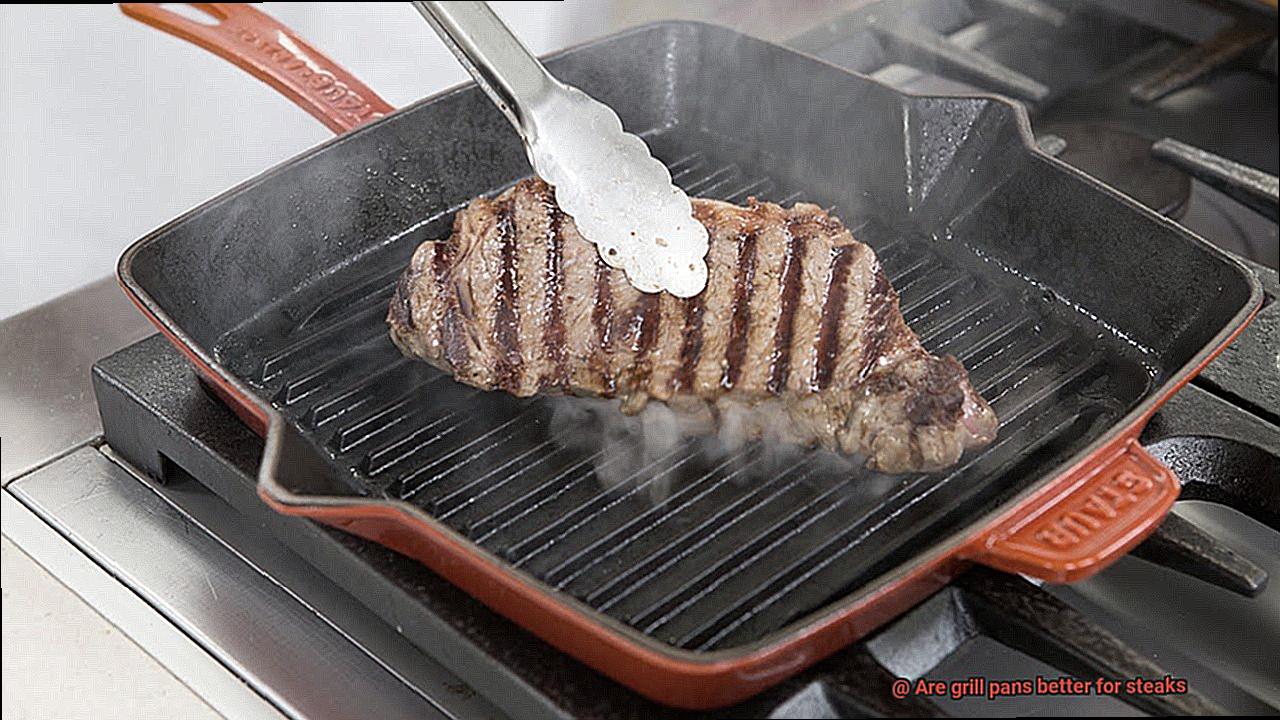
Pros of Using Grill Pans:
- Convenient and efficient way to cook steaks indoors
- Precise temperature control for perfectly cooked steaks every time
- Easy to clean compared to outdoor grills
Cons of Using Grill Pans:
- Lack of smoky flavor compared to outdoor grilling
- May need to cook steaks in batches depending on the size of your pan
Tips for Cooking the Perfect Steak on a Grill Pan
Cooking the perfect steak on a grill pan requires a few essential steps to ensure a juicy and flavorful result. Here are five sub-sections to help guide you through the process:
Choose the Right Cut
Choosing the right cut of steak is crucial for achieving a delicious outcome. Look for steaks that are at least 1 inch thick and have good marbling for flavor and tenderness. Some popular options include ribeye, filet mignon, or New York strip. Thicker cuts tend to work better on a grill pan as they can withstand the high heat without becoming tough or overcooked.
Properly Preheat Your Grill Pan
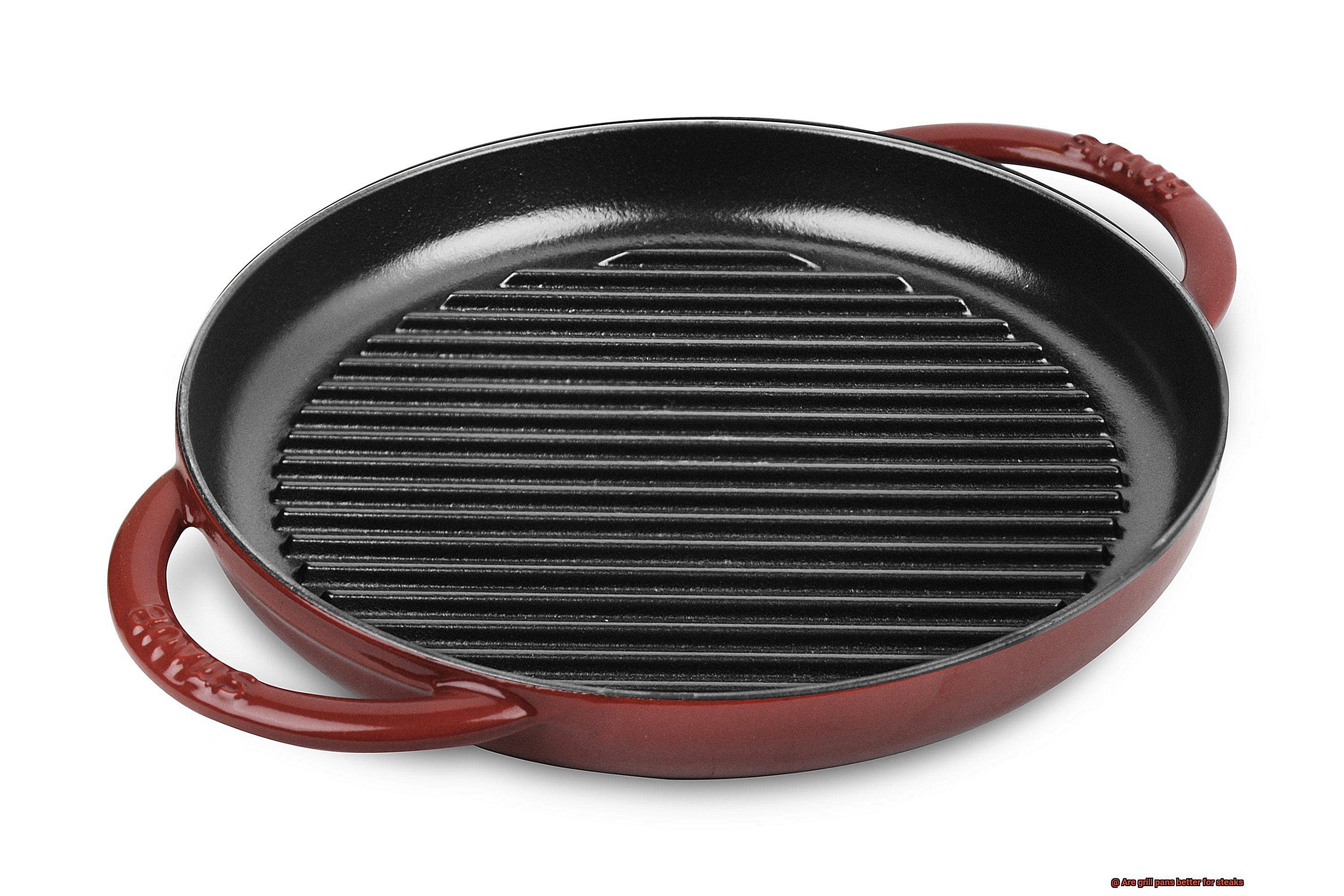
Properly preheating your grill pan is essential for even cooking and creating those beautiful grill marks that we all love. Aim for a medium-high heat, which can be achieved by heating your pan for around 5-7 minutes before adding your steak. Lightly oil the surface of the pan to prevent sticking.
Season Simply
When it comes to seasoning your steak, less is often more. A simple sprinkle of kosher salt and freshly ground black pepper can be enough to enhance the natural flavor of the meat. You can also add some olive oil or melted butter to the pan for extra flavor and to prevent sticking. However, avoid adding too much seasoning as it can overpower the natural flavor of the steak.
Cook With Patience
Once you’ve added your steak to the grill pan, resist the urge to move it around too much – this can prevent those delicious grill marks from forming. Instead, leave the steak in place for around 3-4 minutes before flipping it over and cooking for another 3-4 minutes on the other side (for medium-rare). Use tongs to flip the steak and move it around if needed, but avoid pressing down on it too much as this can cause juices to escape.
Rest Your Steak
After cooking, it’s essential to let your steak rest for a few minutes. This allows the juices to redistribute throughout the meat, resulting in a more tender and flavorful steak. Simply transfer your cooked steak to a plate and cover loosely with foil before letting it rest for around 5 minutes. This will also help prevent the juices from spilling out when you cut into the steak.
How to Clean and Maintain Your Grill Pan
Maintaining your grill pan is essential to ensure it works effectively and lasts for years. With these simple tips, you can keep your grill pan in tip-top shape and enjoy delicious steaks every time.
Clean the grill pan after each use.
Cleaning your grill pan after each use is crucial. Allow it to cool down first, then use a sponge or brush to scrub away any residue or food particles. Avoid using harsh chemicals or abrasive materials that can damage the non-stick coating. Cleaning the grill pan immediately after use makes the process easier and prevents food from sticking to the surface.
Soak the grill pan.
If there is stubborn food residue, soak the grill pan in warm, soapy water for about 15 minutes before scrubbing it again. Soaking helps to loosen stuck-on food particles, making them easier to remove.
Dry the grill pan thoroughly.
After washing, dry the grill pan with a soft cloth or paper towel to avoid rusting. Ensure that the pan is completely dry before storing it to prevent moisture from accumulating and damaging the non-stick coating.
Store the grill pan properly.
Store your grill pan in a dry place to prevent moisture from accumulating and damaging the non-stick coating. You can hang it on a hook or store it in a cabinet, but make sure it’s not stacked with other items that could scratch the surface.
Season the grill pan.
If your grill pan is made of cast iron, season it regularly to prevent rust and maintain its non-stick properties. To season your grill pan, apply a thin layer of oil on the surface of the pan and heat it over medium-high heat for about 10 minutes. This process creates a protective layer on the surface of the pan that prevents rust and ensures even cooking.
Cleaning your grill pan is relatively easy and requires minimal effort. The first step is to allow it to cool down completely. Once cool, remove any remaining food particles from the pan using a spatula or scraper. If there are any stubborn bits of food that won’t come off, soak the pan in warm water for a few minutes to make cleaning easier.
After removing any remaining food particles, use a sponge or soft-bristled brush to clean the grill pan’s surface thoroughly. Avoid using abrasive tools such as steel wool or metal brushes, as they can damage the pan’s non-stick coating. Instead, opt for a non-abrasive dish soap and warm water.
To maintain your grill pan’s non-stick coating, avoid using metal utensils when cooking with it. Instead, opt for silicone or wooden utensils that won’t scratch the surface. Additionally, avoid cooking acidic foods such as tomatoes or citrus fruits in your grill pan, as they can damage the non-stick coating.
Different Types of Grill Pans and Their Uses
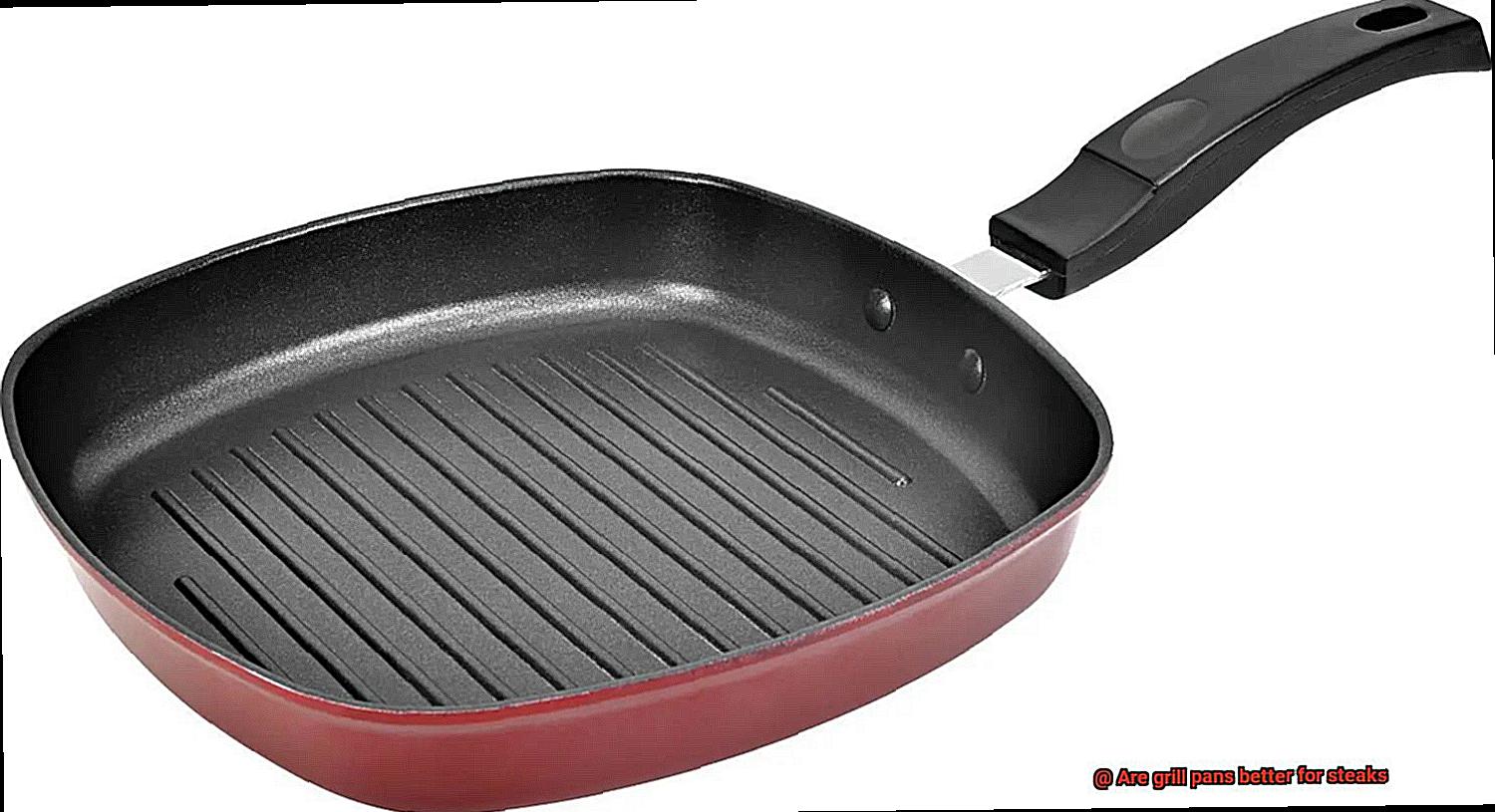
A grill pan might just be the perfect solution for you. Grill pans come in various shapes, sizes, and materials, each with unique features and benefits. In this blog post, we’ll explore the different types of grill pans and their uses to help you make an informed decision.
Cast Iron Grill Pans: For Perfect Steaks
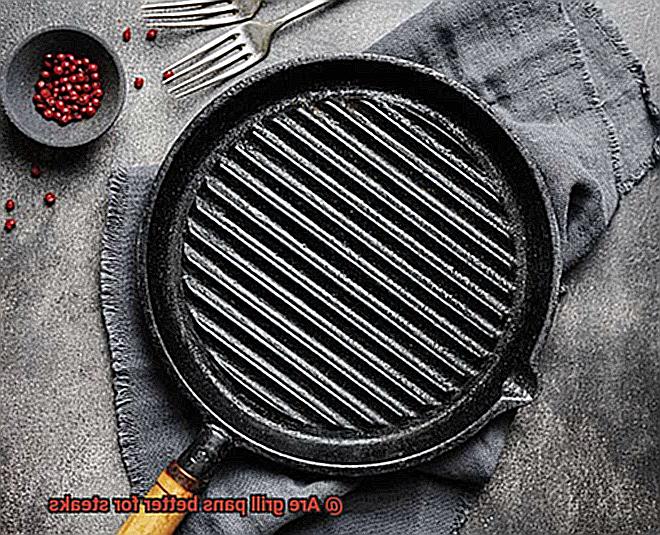
Cast iron grill pans are beloved by grill enthusiasts for their ability to retain heat and distribute it evenly. These pans are ideal for searing steaks as they can get incredibly hot and create a delicious crust on the surface of the meat. The raised ridges on cast iron grill pans also help to create those classic grill marks that we all love.
However, cast iron grill pans are heavy and may take some time to heat up. They also require proper seasoning and maintenance to prevent rusting and ensure longevity. But if you’re willing to put in the effort, a cast iron grill pan can last a lifetime and provide deliciously grilled meals for years to come.
Stainless Steel Grill Pans: For Delicate Foods
Stainless steel grill pans are perfect for cooking delicate foods like fish and vegetables. These pans distribute heat evenly, ensuring that your food cooks without sticking to the surface. Stainless steel grill pans are also easy to clean and maintain, making them a popular choice among home cooks.
However, stainless steel grill pans do not retain heat as well as cast iron or aluminum, which can lead to unevenly cooked food or longer cooking times. They also do not create the same char marks as cast iron grill pans, which may be a drawback for some.
Non-Stick Grill Pans: For Healthier Cooking
Non-stick grill pans are another popular option for those who want to avoid using excessive oil while cooking. These pans have a non-stick surface that prevents food from sticking, making them easy to clean and maintain. Non-stick grill pans are ideal for cooking delicate foods like fish and vegetables as they allow you to cook without worrying about the food sticking to the surface.
However, non-stick grill pans may not get as hot as cast iron or stainless steel pans, which can affect the flavor and texture of grilled foods. They also require careful handling to avoid scratching or damaging the non-stick coating, which can be a challenge for some home cooks.
Shape and Size: Consider Your Needs
In addition to material, it’s important to consider the shape and size of the grill pan. Square grill pans are the most common and are ideal for cooking steaks because they provide ample space for searing on both sides. Round grill pans are better suited for smaller foods like vegetables and seafood, while rectangular grill pans are great for grilling longer cuts of meat like ribs.
How to Choose the Right Grill Pan For You
Grill pans are a fantastic way to enjoy the delicious taste of grilled food indoors. However, with so many options available, selecting the right one can be overwhelming. Here are five key factors to consider when choosing the perfect grill pan for your needs.
Material:
The first thing to consider is the material of your grill pan. Cast iron is a popular choice for its ability to distribute heat evenly and retain heat well, resulting in a great sear on meats. Stainless steel is another durable and easy-to-clean option. Non-stick pans are also available, but they may not provide the same level of searing and charring as cast iron.
Size and Shape:
The size and shape of your grill pan are also crucial factors to consider. If you’re cooking for just one or two people, a smaller pan might suffice, while a larger one will be necessary for bigger groups or families. Additionally, think about whether you want a ridged pan to create those coveted grill marks or a flat one.
Ridge Depth:
The depth of the ridges on your grill pan can impact how pronounced your grill marks will be. Deeper ridges can create more noticeable marks, while shallower ones still provide a nice sear without leaving as much of a mark.
Handle:
The handle of your grill pan should be sturdy and comfortable to grip, especially if you plan to use it on a stovetop or in the oven. Some pans have removable handles for easy storage, while others have drip trays to catch excess grease.
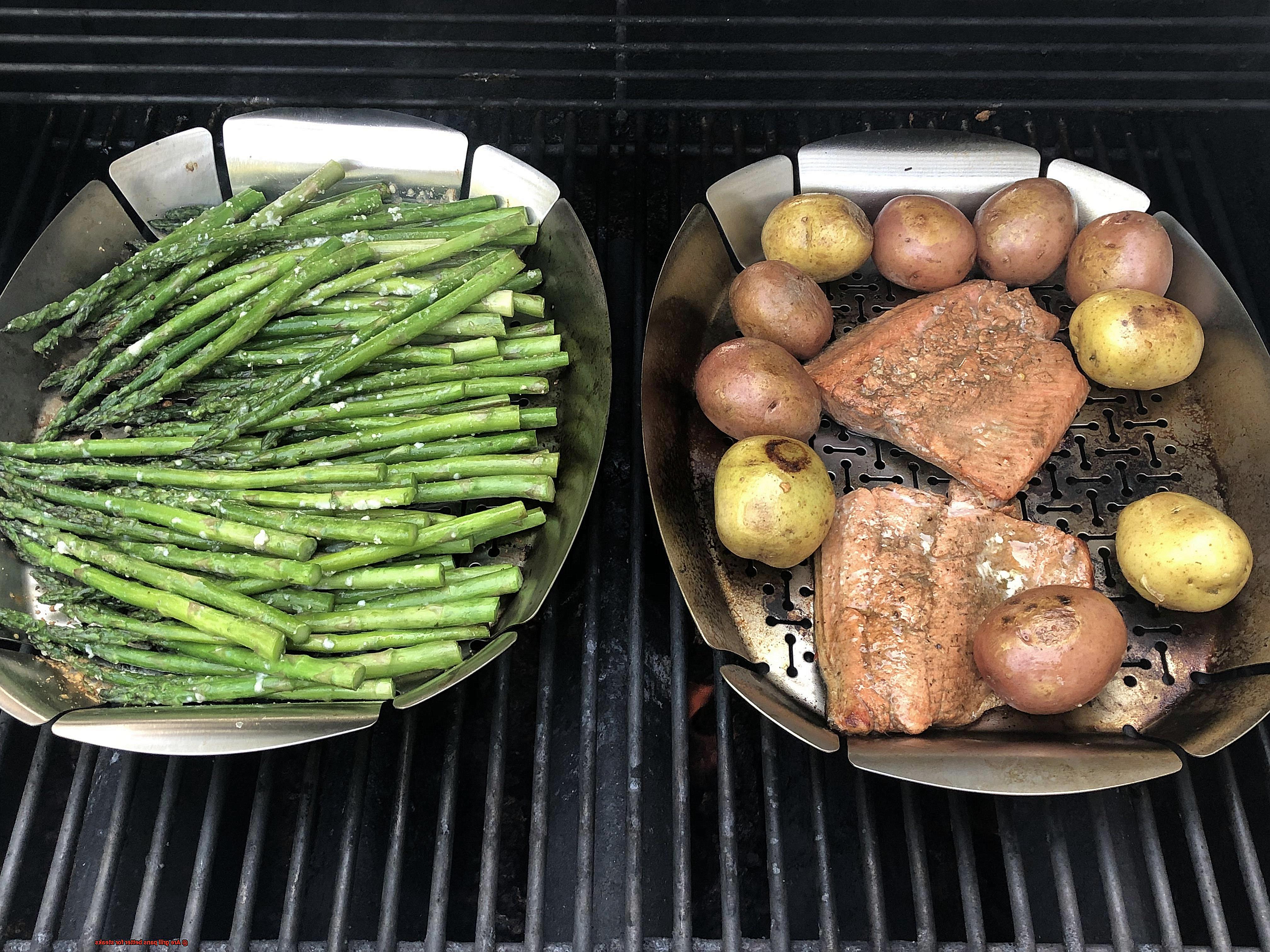
Additional Features:
Finally, think about any additional features you may want in a grill pan. A lid can help trap heat and flavor while cooking, while a drip tray can make cleaning up easier.
Common Mistakes To Avoid When Cooking With A Grill Pan
A grill pan is the answer, but be aware of these common mistakes that people often make when cooking with one.
The first mistake is not preheating the pan. This is a crucial step for achieving those beautiful sear marks and even cooking. To avoid disappointment, preheat your grill pan for at least 5-7 minutes before adding your steak.
The second pitfall to avoid is using too much oil. While it’s crucial to use some oil when cooking with a grill pan, overdoing it can lead to a greasy and flavorless steak. Apply only a small amount of oil (just enough to lightly coat the pan) with a brush or paper towel.
Overcrowding the pan is another common mistake. Trying to cook too many steaks at once can lead to steaming instead of searing, resulting in less flavorful and tender meat. Instead, cook your steaks in batches or invest in a larger grill pan that can accommodate multiple steaks at once.
Last but not least, moving the steak too soon is an easy mistake to make. Resist the urge to fiddle with your steak as soon as it hits the pan. Give it a few minutes to sit and properly sear and caramelize before flipping it over or moving it around.
EW_HOyWAhWw” >
Conclusion
In conclusion, while grill pans can provide a convenient indoor alternative to outdoor grilling, they may not necessarily be the best option for cooking steaks.
The lack of direct contact with an open flame can result in a less flavorful and less evenly cooked steak. However, if you are unable to grill outdoors or prefer the convenience of using a grill pan, there are ways to maximize its potential.
Ultimately, the choice between using a grill pan or outdoor grilling comes down to personal preference and circumstances.

